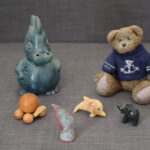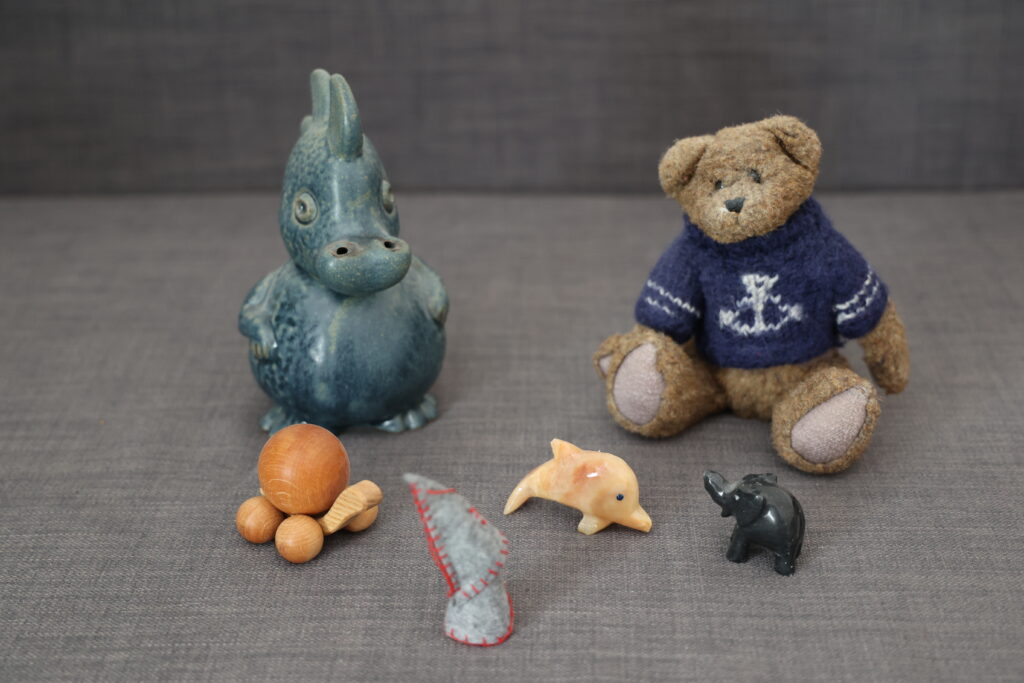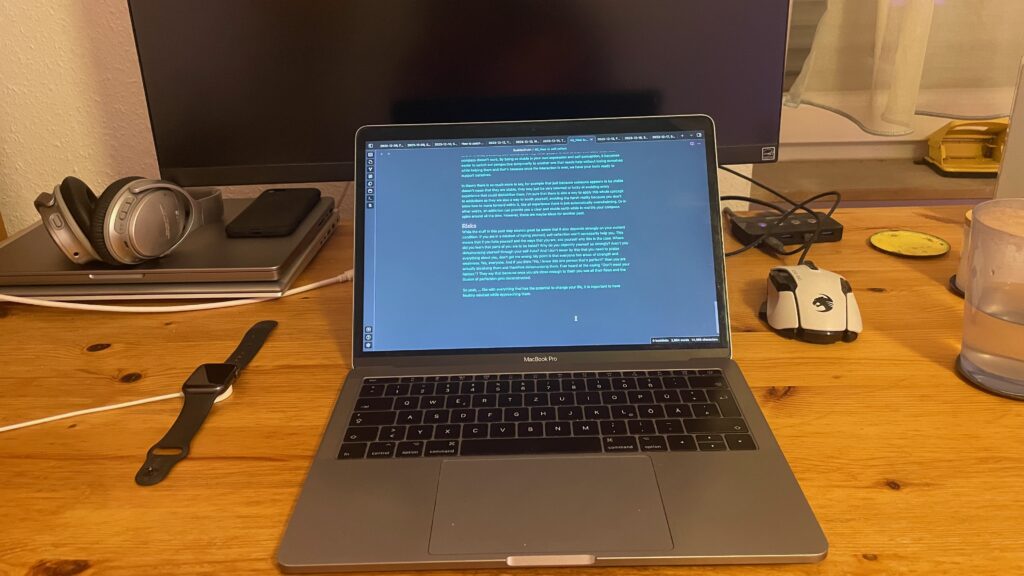If you read my other post about how to give emotions more words you already know that my description of sadness is “an experience of separation with which we were connected before”. https://suddentruth.de/guideline-identifying-emotions/
Recap Of How Sadness Can Be Described
This can be that you grieve the death of family members, or that you are moving your cities, or flats. It can also be because someone judges you by telling you that you are wrong about something which can be especially hurtful if you are very sure that you are right and this situation only comes up because you both just experience a very different reality. Like you are both right from your perspectives, understanding and context.
Finding a Metaphor For How We Cope
The complexity that I saw in sadness was that people seem to process it very differently. While some withdraw from a situation completely, others need an assurance that while there is conflict, the social connection or call it ‘lifeline’ is still there. … I tried to find a metaphor for these experiences that we make.
Imagine you are cutting some vegetables with a knife. All good so far. You are using a tool that you know can be used for good and bad. And you also know that sometimes we can have an intent but the impact plays out very differently.
While you cut vegetables, you listen to a podcast or music, you’ve cut 1000s of vegetables, so you can for sure handle the knife pretty well. You know at which steps to be careful and where you can cut without special focus. Cutting becomes something automated, so you focus on your auditory input.
And then it happens … you cut yourself in the finger, not too deep as it seems and your fingernails protected you before more damaged happened. … However, you were hurt …
And while your noticed the first pain which made you stop all other interactions and retract your last actions, at the same time you get into multiple different emotional states.
Yes, you are hurt, but if something hurts you, the first step is not to process this pain, separation or sadness but you notice anger coming up. Anger at the knife for cutting you, anger at the podcast or music for distracting you, anger at whatever comes in your mind just in this moment. You want to judge these elements. Blame them. Make sure that they won’t dare to do this again to you. … If you had any other pains or thoughts this day you won’t notice them in this moment. All energy is focused on this situation.
While we take care of our wound we check our body … does it hurt a lot? Does it look bad or is the cut only superficial? How much does it bleed? We are moving from a state of anger and judgment to a state of sadness by verifying reality through internal and external sensors. (As a child we may didn’t do this but were co-regulated by our caregivers in one or another way (maybe not always in a healthy caregiving way but that’s another story))
Now that we are in a state of sadness I want to describe two extreme ways of how we can process our emotion. They may will sound familiar to you. …
One way would be that we focus still on our wound … we can’t take our eyes of it because we need to ensure that nothing worse happens to it. Our reality perception attaches itself to this wound … and we may have trouble to detach from it. We will only be able to detach when we feel like it’s okay now and the wound is safe and nothing bad happened over a long time. In the meantime we will think about all kind of scenarios regarding what else could be hurt, whether we could have prevented this situation. We will replay this situation again and again in our head until we are exhausted or we found an epiphany that helps us to detach from it. … From the outside this can look like we are avoiding any further conflict but that’s because we are so much focused on the internal experience that we can’t focus on the external experience, on the connection with other people.
Now, another way would be to check shortly that the wound is okay and then seek an outer validation that tells us that everything is okay. Even sometimes multiple times. It is as if the internal experience actually gets avoided and instead we attach ourselves to external validation. In this scenario we really, really need and seek this external validation or this internal experience of pain continues. The nice thing is that through this kind of behaviour we connect with other people and through the feeling of community we feel less pain. Kind of as if a shared pain is half as painful.
If you read carefully you may realised that these described in the end the so called ‘attachment styles’ of avoidant and anxious. While externally avoidant and therefore internal anxious learned in their life that they need to process all the pain by themselves because no one will watch out for them, the other party that is externally anxious and internally avoidant never learned to trust in themselves and their inner experience.
A secure attachment style would probably be in the middle. Recognise, accept and process their inner experience and at the same time seek community for validation. Being a resilient, stable, individual member of a community that isn’t totally co-dependent on others but at the same time has a trusted circle that they know they can rely on certain contexts.
Transfer To How This Maps To Interpersonal Conflicts
This whole metaphor is around a knife, a simple object, and our internal experience and how it may be perceived by others around us. This scenario could be extended by the knife not being wield by us but by somebody else. Is there intent to hurt us or are they hurting us by accident? … Exchange the knife through words and the kitchen scenario through a topic you discuss with them. Also exchange your physical body through an image of your emotional body. … Suddenly their words will hurt your emotional body with or without intent but with this impact. You will focus on the area of pain. You will be angry at them, judge them and their words. if you are externally avoidant, you will withdraw and think about the 1000 scenarios of how this situation could have played out differently. If the other person is externally anxious, they will wonder why you withdraw and feel wounded by this action itself and seek connection with you while you even further withdraw.
Conclusion
I always wondered why people can’t see my pain and why I need so long to reconnect. Why I basically withdraw further and further and why feeling lonely, sad and abandoned is such a prominent topic in my life. … I never experienced this safety really with others in a deep enough way that I feel like I can rely on it. I’m working on it. To see myself as my primary caretaker but also allow others to be secondary caretakers that I can share certain types of pain with so that it can be carried by community.
Goal of this post is to provide a metaphor of sadness that makes it relatable to others as maybe not everybody experience sadness the same way but everybody knows what it means to cut or hurt yourself (which child didn’t fell on their knees and scratched them up a little bit? (rhetorical question 🙂 ).
So, next time you feel sad. Ask yourself. What’s the knife in this situation and where am I in the process? Hopefully this metaphor allows you to extend your reality perception and do the things that improve your experience with it! Good luck!
Addendum
A day later I realise that the intense experience of this sadness, a.k.a separation is actually also an expression of fear. A fear that the wound could get even deeper, hurt more, infect or whatever. While with someone with an anxious attachment style may feels that they are going to be abandoned, the one with avoidant attachment style already feels abandoned.
In the end maybe imagine that a relationship consists out of multiple bridges. A conflict burns temporarily down a certain bridge. How do we react when we notice that a bridge burns down? If we are avoidant we may burn down every other relevant bridge. It’s a protection measurement. If we are anxious we try directly to build up this bridge again because we may can’t see how all the other bridges still exist and we think that this is the last lifeline.
Sometimes however maybe our attachment style doesn’t get triggered. We can see this bridge burn down and are aware that this doesn’t cause any risk to ourselves and also we still can see other bridges around us in this relationship. That would be an expression of a secure attachment.
Therefore, we may actually have all types of attachment style within us. How they express themselves depends on the relationship we have with this other person and how this conflict plays out towards us. I.e., no one is 100% secure, anxious or avoidant.
P.S. You can extend this metaphor by adding gloves to the hand that normally gets cut, i.e. you are protecting yourself but you still may are not successful at cutting vegetables because the knife continues to try to cut your hand. … or that you switch the knife, i.e. you end one relationship and find a new one that doesn’t cut you all the time … or that you hand and the knife communicate with each other what type of stuff is safe to cut (what topics you talk about) and how fast and deep you go there. … Cuts happen in the end in life, otherwise we may totally slow down and cut less and less vegetables because we are too afraid to make a bad experience but instead we want to learn how to communicate which each other before a cut happens but also after a cut happens how we want to interact with each other.
This is going to be short but important. Have you ever wondered what you would do if you win the lottery or did you dismiss . . .
Do you know ear worms? Like, these catchy songs that repeat themselves again and again in your audio imagination. You hum them, you may even . . .
I learned that this doesn’t come easy to everyone. As everyone of us experiences reality differently, we also experience ourselves reality differently. Some have a . . .
This post will provide you yet another metaphor of how trauma and emotional burdens can look like. My previous metaphor for this you can find . . .
This post is about about how self-love helps us to get out of survival mode and avoiding coping mechanisms. It is about finding yourself and . . .







